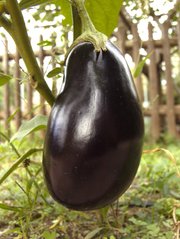By Gardener Jack
There are two seminal months in the year. Forget the official dates. By the end of October it is winter; by the end of April it is summer. This means any plant we grow from seed in April will have fierce sun to contend with.
The nights will be warm too, and that is a problem for tomatoes. The standard tomato needs temperatures at or below 68 degrees to set fruit. The smaller the tomato, the better the chance of a higher fertilisation temperature. Go for large fruited cherry tomatoes as well as cherry tomatoes. I was given the seeds for a Bahamian 'summer tomato' and I will give it a try and cross my fingers.
Peppers are serious warm weather lovers and the biggest problem you will have will be sunscald on the fruits. If the peppers can be planted in a location where the plants are shaded during the hottest part of the day you should have success. I grew peppers throughout last summer in pots in the shade of a thunbergia vine. They were mostly Cubanelles, with some Anaheims and regular bell peppers.
Hot pepper plants do not even have to be shaded from the sun as long as they get enough water, but a little shade helps. Hot peppers can be enormously productive during the summer months. If you get too many you can freeze the fruits for future use.
If you buy ginger regularly from the store you should have your own ginger patch. Buy several hands and generously cut away parts that have a growing point, or 'eye'. The pieces should be two-inch slices of a 'finger'. Plant these five inches deep in fertile soil, fertilize moderately and keep watered. The foliage of the ginger is upright canes with leaves at the top. The flowers are usually white but sometimes another pastel shade.
When the flowers drop and the plant dies back you can dig up your ginger hands. You then start the process over again by selecting candidates for planting and using the rest for culinary purposes. The ginger pieces that are going to be re-used should be allowed to dry out for a week or two before planting. This reduces excess moisture and allows development of the eye shoot.
Now is the time to find some space in the yard for watermelons. The formula for watermelons is lots of water and lots of sun. All you have to worry about is the water. Most watermelon plants produce two fruits, so you can calculate your needs from that. If you have plenty of room you should plant watermelon seeds every two weeks into the summer.
Corn is another warm weather crop that is very popular yet easy to grow. The soil should be quite rich and well worked over to allow fast root growth. Corn seeds should be sown in blocks rather than rows because the plant pollen is distributed by wind. At pollination time you can shake a corn stem and you will see pollen drifting like smoke.
If you love lima bean soup you can start your own plants in April and enjoy the best soup ever, with freshly plucked and shucked beans from the garden. If you have a trellis you can use pole lima beans, otherwise buy bush lima beans. If you buy pole lima beans by mistake and have no trellis, intersperse the seeds in your corn patch. The corn will give the beans something to climb on. You may have to wait a few weeks before pulling your corn stalks after the crop is over because the beans take a few weeks longer to bear.
The king of summer vegetables is okra. If you love okra then now is the time to start growing this really warm weather crop. Okra comes in tall and dwarf varieties and the tall give the best results. Dwarf okra, however, produces faster. If you want some but not too much okra, sow a dwarf variety. If okra 'can't done' for you, sow plenty of tall varieties.
Two other vegetables that do well in early summer are eggplant and tomatillo. Snake (or asparagus, or yard long) beans produce well in warm weather. Pick them when they are ten inches long for best flavour.
Only the strong survive when it comes to summer flowers. The usual suspects are: zinnias, cosmos, Mexican sunflower, vinca and marigolds. If you get these under way soon you will have both a pretty and productive summer garden.
gardenerjack@coralwave.com





Comments
Use the comment form below to begin a discussion about this content.
Sign in to comment
Or login with:
OpenID